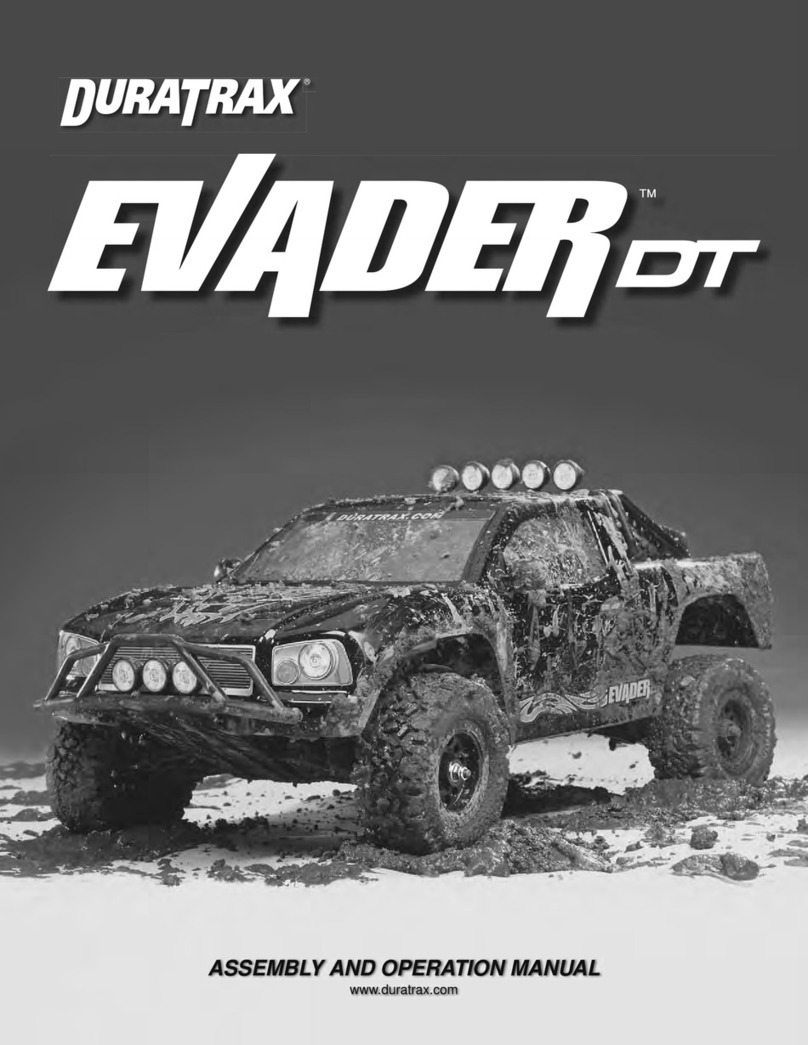Introduction.................................................................................2
Safet Precautions .....................................................................2
Helpful Hints................................................................................2
Stress-Tech™Parts Guarantee...................................................2
Repair Service.............................................................................2
Specification & Description Changes.......................................3
Screw Information ......................................................................3
Required Items for Completion .................................................3
Tools You Will Need....................................................................3
Finishing the RTR Version.........................................................4
Assembl of the Pre-Built Version............................................6
Preparing the Radio System .................................................6
Section 1: Steering Servo Assembl ........................................6
Section 2: Assembling the Radio Tra .....................................7
Section 3: Installing the Throttle Servo....................................9
Section 4: Throttle & Brake Linkages.......................................9
Section 5: Radio Adjustments.................................................10
Section 6: Prepare the Engine.................................................11
Section 7: Finishing .................................................................12
Section 8: Carburetor Settings................................................12
Section 9: Breaking-In the Engine ..........................................13
Section 10: Running the Engine .............................................13
Section 11: Engine Maintenance.............................................14
Section 12: Performance Tuning.............................................14
Section 13: Maintenance Tips .................................................15
Engine Trouble Shooting .........................................................16
Thank you for purchasing the DuraTrax Maximum BX. This
manual contains the instructions you need to build, operate,
and maintain your new nitro R/C buggy. Read o er this
manual thoroughly before building or operating the
Maximum BX.
When the safety precautions are followed, the Maximum BX
will pro ide years of enjoyment. Use care and good sense
at all times when operating this radio controlled buggy.
Failure to use this ehicle in a safe, sensible manner can
result in injury or damage to property. You and you alone
must insure that the instructions are carefully followed and
all safety precautions are obeyed.
• Do not operate the Maximum BX near people.
Spectators
should be behind the dri er or at a safe distance away
from the ehicle.
• The engine and exhaust system produces quite a bit of
noise. If you are disturbed by the amount of noise this
buggy produces, wear ear protection such as earplugs.
Do not run this ehicle when or where it can disturb
others.
• The engine and exhaust system can become ery hot.
A oid touching any of these parts during use and until
they ha e cooled down.
• Model engine fuel is poisonous. Make sure you read and
follow all of the precautions on the fuel container. Keep
fuel out of the reach of children.
• Model engine fuel is flammable and when ignited has a
flame that is difficult to see. A oid sparks, flames,
smoking, or any other ignition source when fuel is near.
• The engine emits carbon dioxide just like real cars. Do
not operate this model indoors.
• Before turning on the transmitter, make sure that no one
else is on your frequency.
• A oid working o er a deep pile carpet. If you drop a small
part or screw, it will be difficult to find.
• Place a mat or towel o er your work surface. This will
pre ent parts from rolling off and will protect the work
surface.
• A oid running the buggy in cold weather. The plastic and
metal parts can become brittle at low temperatures. In
addition, grease and oil become thick, causing
premature wear and poor performance.
• Test fit all parts before attaching them permanently.
We ha e engineered the Maximum BX to take the rough
and tumble abuse that makes R/C fun. We are so confident
of the quality and durability of the Stress-Tech™plastic parts
that we will replace any Stress-Tech plastic part you break
during the first 6 months you own the buggy. Just send in
the part to us and we will send you a Free replacement.
Please see the Maximum BX parts list for the items co ered
under the Stress-Tech guarantee.
To recei e your free replacement part please send the
following to the Hobby Ser ices address listed on the co er
of this manual:
• The broken part must be included.
• The part number and description of the broken part.
• Dated copy of your in oice or purchase receipt.
• Your name, phone number and shipping address.
Repair ser ice is a ailable anytime.
• After the 90 day warranty, you can still ha e your
Maximum BX repaired for a small charge by the experts
at DuraTrax’s authorized repair facility, Hobby Ser ices,
at the address listed on the co er of this manual.
REPAIR SERVICE
STRESS-TECH™PARTS GUARANTEE
HELPFUL HINTS
SAFETY PRECAUTIONS
INTRODUCTION
TABLE OF CONTENTS
2






























